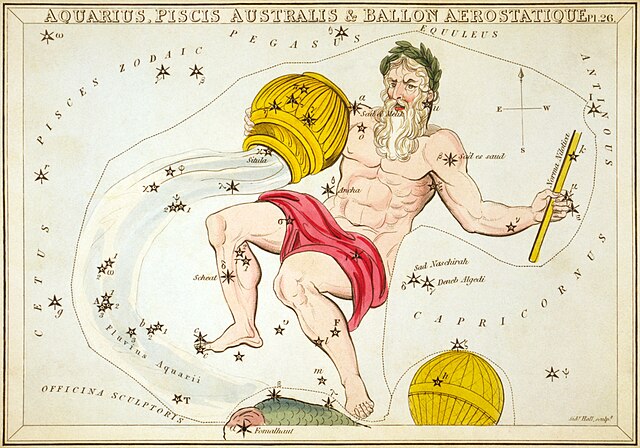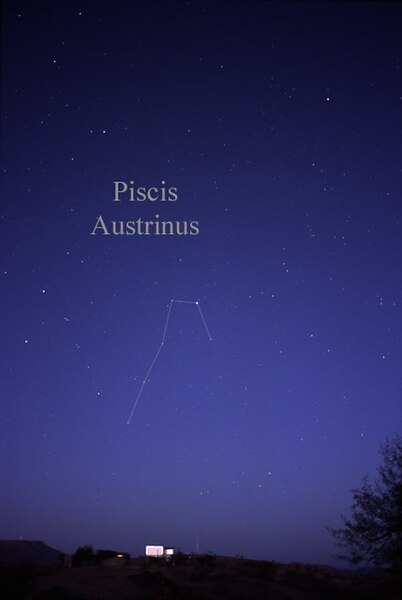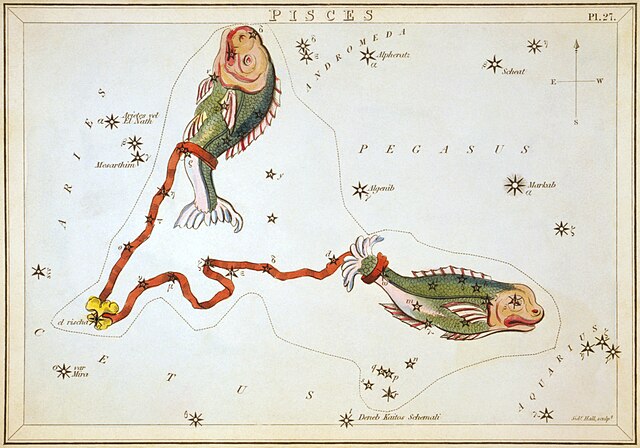Piscis Austrinus is a constellation in the southern celestial hemisphere. The name is Latin for "the southern fish", in contrast with the larger constellation Pisces, which represents a pair of fish. Before the 20th century, it was also known as Piscis Notius. Piscis Austrinus was one of the 48 constellations listed by the 2nd-century astronomer Ptolemy, and it remains one of the 88 modern constellations. The stars of the modern constellation Grus once formed the "tail" of Piscis Austrinus. In 1597, Petrus Plancius carved out a separate constellation and named it after the crane.
Piscis Austrinus can be seen cut off at the bottom of Urania's Mirror's 1825 depiction of Aquarius. Next to it is the obsolete constellation Ballon Aerostatique.
The constellation Piscis Austrinus as it can be seen by the naked eye
Pisces is a constellation of the zodiac. Its vast bulk – and main asterism viewed in most European cultures per Greco-Roman antiquity as a distant pair of fishes connected by one cord each that join at an apex – are in the Northern celestial hemisphere. Its old astronomical symbol is (♓︎). Its name is Latin for "fishes". It is between Aquarius, of similar size, to the southwest and Aries, which is smaller, to the east. The ecliptic and the celestial equator intersect within this constellation and in Virgo. This means the sun passes directly overhead of the equator, on average, at approximately this point in the sky, at the March equinox.
The constellation Pisces as it can be seen by naked eye
From Urania's Mirror (1824)




